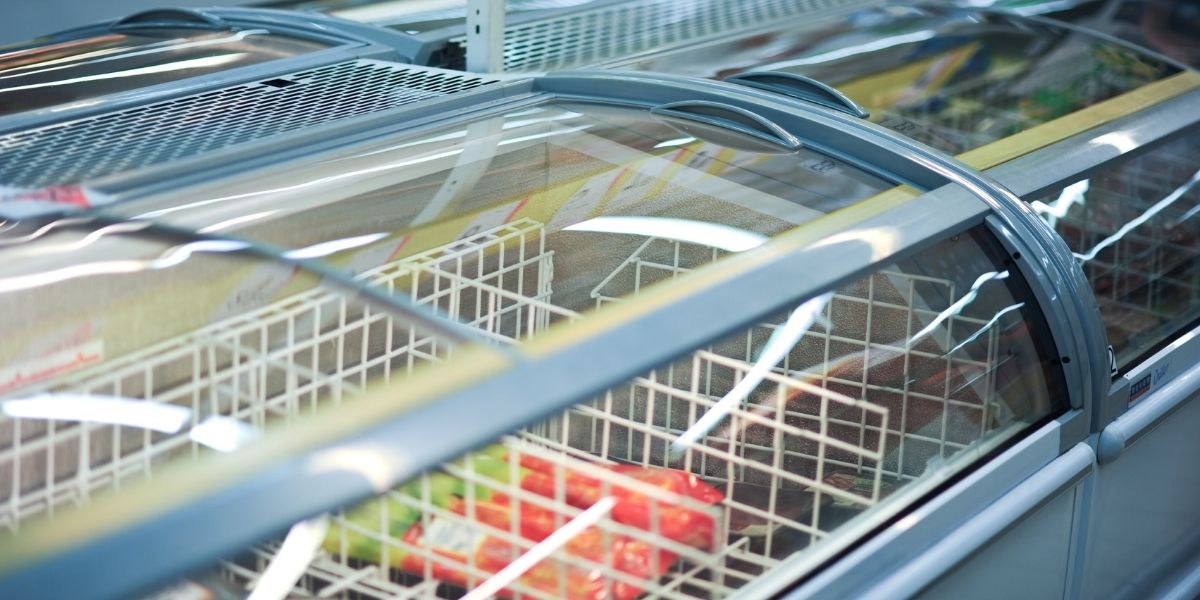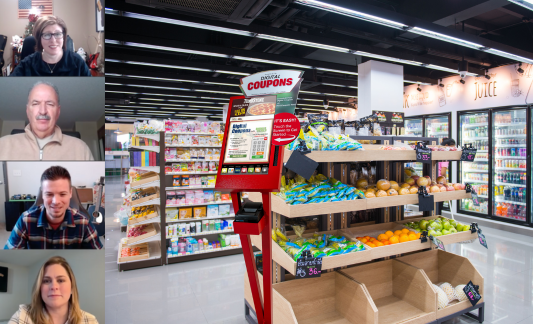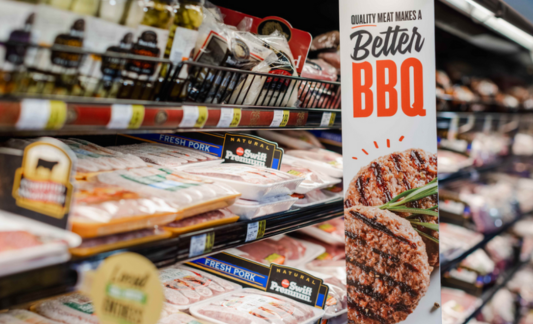Help Isom IGA recover from devasting floods

4 min read
How An Energy Grant Can Upgrade Your Store: Webinar Recap
Written by IGA News
Oct 17, 2023
IGA CEO John Ross and Ratio Institute Co-founder Peter Cooke recently hosted a webinar, How An Energy Grant Can Upgrade Your Store, to discuss the exciting prospects of the Rural Energy For America Program (REAP), highlighting its potential for sustainability and increased profitability through funding for energy upgrades.
“There’s no bigger no-brainer in the world than to look at the store through the lens of an expert that can help you stop wasting money on energy. Don't pay all that money to utilities,” Ross said.
Since energy efficient appliances and other solutions can be expensive, REAP is designed to apply government funds to help small businesses in rural communities get the financing they need to improve their operations.
“This is the best opportunity that's come out for rural independent grocery store owners in many years,” Cooke said. "Saving energy maximizes bottom-line profits."
Watch the 30-minute webinar below for more insights into REAP, including who is eligible, how the money can be spent, and how to apply. Want to know what questions fellow retailers asked? Skip to the 20-minute mark in the video.
Get Started
Ready to get started?
The first step to is to determine your store's eligibility. The REAP grant is for stores in communities of less than 50,000 people. To determine if your store location qualifies, plug in your store address to the USDA-eligible rural area map here. Cooke says also you should have less than 500 employees and less than $40 million in annual revenue per store location.
If your store is eligible, the next step is to complete an energy audit. As IGA’s sustainability partner, Ratio Institute can do that at a reduced cost for Independent Grocers Alliance members ($500 invoiced by IGA). They will identify where your store is consuming the most energy and propose solutions to solve them. To do this, you will need to complete their benchmarking survey, which takes about 15 minutes, and provide them with a minimum of 12 months’ worth of the following bills:
- Electric bills
- Gas (heating) bills
- Water and sewer bills
- All solid waste and recycling bills or credits
- Any other municipal services bills
After Ratio Institute receives the assessment and bills, they will calculate:
- Realized savings: value in dollars and avoided greenhouse gas (GHG) of existing in-place items
- Potential savings: value in dollars and GHG of process and/or upgrades to employ or deploy
- Best practices: value of additional technologies and refrigerant improvements in dollars and GHG
- Operational comparisons: how your store compares to a typical store of your size, plus other insights and recommendations based on these metrics
Once the energy audit is complete, you can deliver it to your contractor to estimate a quote for recommended services.
Finally, you will submit the energy audit and scope to the USDA via the application. Alternatively, Ratio Institute can submit the grant application on your behalf (Ratio Institute charges $1,000 for this service, which covers the $500 for the report and $500 for the initial application, plus 10% of the project costs based only on grant approval).
Key Webinar Takeways
- REAP may cover up to 50% of the overall energy upgrade costs (examples include HVAC, lighting, refrigeration), up to $500,000 per site.
- The USDA has a loan program to cover the 50% that the retailer needs to cover in any sort of energy upgrade.
- Ratio Institute can be your liaison through the whole application process, removing much of the stress and time from completing the paperwork on your own.
- Energy and waste bills are paid out of gross profits, so a store must sell many dollars’ worth of product to produce $1 of profit. Therefore, every dollar of reduced energy costs is equivalent to $18 in revenue, according to Cooke.
Helpful Questions Answered
Cooke and Ratio Institute Co-Founder Jonathan Tan answered some additional questions at the end of the webinar.
If there are local or state funds for other kinds of upgrades, incentives, or rebates will this process also reveal those? In other words, opportunities to "double dip"?
“We say go for it … We have not heard from USDA that you're also not allowed to leverage other state money to try to reduce the costs," Cooke said. "But yes, we think it's allowable and you may as well apply for it, and then also try to get those state funds. We will help facilitate that.”
If I am already installing new cases and compressors now, can I still apply for the REAP grant?
“It depends," Cooke says. "If you don't have a purchase order already written or you haven't actually started paying for it, then yes, you can apply for it. But if you already got a PO, or you've already started making payments, then no, it's too late.”
How long will it take to get paid?
"I think they're going to be moving pretty quickly on this because they're reviewing all the proposals that come in each quarter. So I know they want to get this money out the door ASAP, ” Cooke said. He also notes that retailers need to apply for a unique entity identification number if they don't already have one. This allows them to accept federal funds. So you will use this unique tax identification number and the USDA going to wire that money. Again, Ratio Institute will help you with this if you choose to have them be your liaison in the application process.
It is important to note that the next quarter deadline to complete the application process is December 31.
Cooke suspects that the USDA will start letting retailers know if they are going to receive the REAP grant one or two months after the end of the quarter.
How important is the passage of the AIM Act in relation to this grant?
Following the passage of the AIM Act (2020), the production of HFCs are scheduled to be phased down 79% by 2029 and by 85% by 2036. This is driving the costs of refrigerants. "We expected double digit increase annually on those synthetic refrigerants from now until 2029. And then 2029, we believe it's going to be a hockey stick," Tan said. "So with that, this is a great opportunity to really look at your systems holistically, and then come up with a plan on how to retire those refrigerants. Transfer your stores into something new. And it's going to eliminate the need to do any kind of recording on those systems if you go with a natural refrigerant, and there are opportunities to increase efficiency."
You May Also Like
These Stories on Marketing Minute
Dec 17, 2025 7:28:02 PM |
1 min read
May 20, 2025 2:14:11 PM |
2 min read



No Comments Yet
Let us know what you think